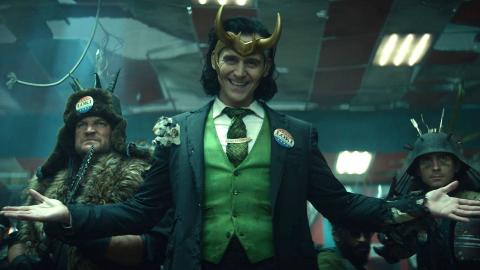
So Many Lokis
by Alissa Lee Dornink Hawes
I had been waiting all year for June, ever since Disney announced the Loki miniseries would be available on demand. Wednesdays (or Loki Day as I started calling it) were the highlight of the week when I could sit down and finally watch the next episode.
My first introduction to the God of Mischief was in Marvel’s 2011 “Thor” movie as he tried to take over Asgard. I followed his adventures in the first “Avengers” movie where he schemed to rule Earth, then in “Thor: The Dark World” where he teamed with Thor to fight the Dark Elves, and in “Thor: Ragnarok” as they teamed up again to fight Hela. “Avengers Infinity Wars” and “Endgame” paired him with the Avengers as they battled Thanos.
I was curious and could not wait to see where they would take his story next after the events in “Endgame,” and the TV show did not disappoint. After consuming all the film and TV Loki content I could (some things more than once) I thought I should branch out and do my research into Loki the Norse god and Loki the Marvel comic book character. Each of these titles give a little bit more insight into the complex character of Loki and help you appreciate all the Easter eggs dropped in the recent miniseries. (Don’t worry, no spoilers ahead.)
One of my favorite books is the extensively researched “Norse Mythology” by Neil Gaiman. Gaiman’s retelling of the Norse myths goes into great detail about all the Norse gods and covers the history of Asgard, from its creation to Ragnarok. Loki appears as his trickster self, but is a blood brother to Odin, a noticeable difference from Marvel’s Loki. The audiobook, narrated by Gaiman, is a great way to enjoy this retelling of the stories and made my work commute much more enjoyable.
“The Gospel of Loki” by Joanne M. Harris is an engaging ‘biography’ of the ultimate trickster told from the perspective of Loki himself. He gets to tell his version of events, from his first adventures in Asgard to its fall, and he definitely has his own perspective on how things went. “The Testament of Loki,” the sequel, picks up centuries after Ragnarok and is set in modern times where Loki finds new ways of causing mayhem.
Loki has caused mayhem for decades in Marvel stories. He first appeared in Marvel’s graphic novels in 1949, and the modern version made his debut in 1962. Since then he has been featured in solo series and as a character in other superheroes’ graphic novels. He’s frequently cast as the villain, always scheming or out to thwart the heroes. “Thor and Loki: Blood Brothers” by Robert Rodi is similar to Harris’ novel, in that it is told from Loki’s perspective and delves deeper into his mistrust and issues with the other Asgardian gods like Balder, Sif, and of course his brother Thor.
Wonder what young a Loki might be like? “Journey into Mystery: Fear Itself” by Kieron Gillen begins when Thor, who misses his younger brother so much, brings his newly reincarnated brother back to Asgard. There they must save it from impending war, but the Asgardians first must trust a young, teenage God of Mischief with a Stark phone. Not an easy task considering Loki’s dicey history with them.
What about Loki as a secret agent? Young Loki is all grown up and turned secret service in “Loki: Agent of Asgard” by Al Ewing. For each mission he completes for the All-Mother, she will erase one of his previous sins, and for Loki there is no shortage of those. Who would be better suited for a life of spying, lying, and deceiving than the Trickster God himself?
“Vote Loki” by Chris Hastings is what you get when you cross political satire with a graphic novel. In this series Loki sets his eyes on being president of the United States. Who better suited for a life of politics than the God of Lies? Can he win over the general masses and media with his charisma and manipulation?
Loki has a rich and complex backstory and has played many roles in mythology, movies, and graphic novels. He is constantly evolving, but one thing is for certain, you can expect the unexpected with him.